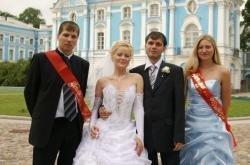Theme: Celebration
The aim: To talk about celebrations
The main Objectives: SWAT
- Listen to a radio programme
- Practise Modal verbs
- Read for gist and details
- Practise topical vocabulary
Warm up:
- Look at the pictures and phrases on the board and match them.
- Get married - C
- get a new job - G
- pass an exam – D
- celebrate your birthday – A
- have a baby – B
- Look at the photos what are the celebrating?
- Chinese New Year-C
- Sports Victory – B
- winning an award - A
Lesson Procedure
Pre listening task:
What is the last thing you celebrated?
For example: We had a party last month to celebrate my grandfather’s eightieth birthday.
Listening for gist :
Listen to five people. Use the strategies and decide what each person is celebrating. There is one extra topic.
getting a new job
- passing a driving test
- retiring from work
- an 18th birthday
- [;’pwinning a scholarship
- winning a Hollywood Oscar
Grammar Practice :
Consolidation of modal verbs. Have to, don’t have to, can, can’t
When do we use have to, don’t have to, can, can’t?
Pre- reading task.
There is a description of traditional Kazakh weddings with have to, don’t have to can, can’t. Before doing this exercise let’s check if you know these words:
Best man, bride, groom, bridesmaid,
Reading for gist:
The text: “Traditional Kazakh weddings”
The Wedding ceremonies began with the matchmaking, at which the size of the bride-price and the order of its payments have to be agreed upon. From this moment on the preparation of the dowry can set into motion in the bride’s home. As a rule the parents have to carried out the selection of the bride, since frequently the bride and groom don’t know each other. Only after payment of the bride- price can the groom “secretly” visit the bride. After the payment of the kalyn, the wedding day have to be designated. Usually the groom first has to came to the bride’s aul. The bride departed from her own aul and set off for the groom’s home accompanied by the groom and a lot of relatives when the bride arrived at the groom’s home, she covered her face. Entering the house, she has to greet the fire at the hearth. Then one of the groom’s young relatives raised the veil slightly from the bride’s face with a small stick.
Reading for details. Give the words to these definitions. Ex: 2 p: 42
He is getting married- groom
They are invited to the wedding- guests
She is getting married- bride
He helps the groom at the wedding- best man
She helps the bride at the wedding- bridesmaid
Follow- up: 1) Listen to three wedding dialogues. Who is talking?
2) Ex: 8-9 p: 43 Write two rules for each of the places below. Use the words in brackets with have to or can’t.
Wrap – up: 1) Evaluation of pupil’s activities
2) Home task Ex: To find out information about other culture’s wedding ceremony.
. Appendix
The text: “Traditional Kazakh weddings”
The Wedding ceremonies began with the matchmaking, at which the size of the bride-price and the order of its payments have to be agreed upon. From this moment on the preparation of the dowry can set into motion in the bride’s home. As a rule the parents have to carried out the selection of the bride, since frequently the bride and groom don’t know each other. Only after payment of the bride- price can the groom “secretly” visit the bride. After the payment of the kalyn, the wedding day have to be designated. Usually the groom first has to came to the bride’s aul. The bride departed from her own aul and set off for the groom’s home accompanied by the groom and a lot of relatives when the bride arrived at the groom’s home, she covered her face. Entering the house, she has to greet the fire at the hearth. Then one of the groom’s young relatives raised the veil slightly from the bride’s face

















